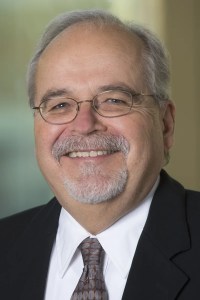
Pew Research Center released a groundbreaking survey today of nearly 8,000 sworn police officers who work in departments around the U.S. with at least 100 officers. The survey provides a detailed look at how officers feel about their jobs and how they view relations with the communities they serve at a time of increased tensions following high-profile encounters between law enforcement and blacks.
Senior Editor Rich Morin and Senior Research Methodologist Andrew Mercer were part of the team that designed the project, analyzed the survey results and wrote the final report. What follows is an edited interview with the authors about the purpose and methodology of their survey.
What prompted you to do this survey? Why is it important?

Morin: Over the past few years, police involvement in the deaths of blacks in the U.S. has prompted a national debate over police tactics, training and methods. These fatal encounters have also energized the public debate about the relationship between police and blacks and other minority communities.
We and others have explored public views about the police, race and the use of force. This project helps to fill an important knowledge gap: What do police think about these recent events, and what do they see as the key issues and concerns facing them and their profession? And how do the views of police officers compare with those of the public? To the best of my knowledge, this is among the largest and certainly the most wide-ranging survey of police officers ever attempted.
The survey was conducted for Pew Research Center by the National Police Research Platform. What is that? Why did you work with them on this survey?

Mercer: The National Police Research Platform was developed and is currently managed by a consortium of academics at universities around the country who have specialized in doing impartial and nonpartisan research focused on police and police departments. Since the task of building and fielding a national sample of police departments and officers is a massive undertaking, we decided to work with a group of experts who had already laid the groundwork for doing this kind of research.
Morin: There are 15,000 police and sheriff’s departments across the country, and there are more than 750,000 sworn officers. There’s no comprehensive list of all 750,000 officers from which we could randomly select. This was not only the best way – it probably was the only way we could do a high-quality survey in a reasonable amount of time and with a reasonable budget.
Did you do any background research to prepare for this survey?
Morin: Yes. We collected the few available surveys that had been done on police, which almost exclusively were done on a single department. We collected an extensive amount of scholarly research on police, police practices and the psychology of being a police officer, which informed our survey questionnaire. We invited officials from a local police department in the Washington, D.C., region to come in and talk with us about current police practices and various law enforcement issues, and we asked them for their opinions about the kinds of questions that they thought would be important for us to ask in our survey. We talked to experts involved in the police reform effort and also rode along with police officers in local jurisdictions to get the views of rank-and-file officers on issues confronting law enforcement.
This survey is a national sample of police officers working in departments with 100 or more sworn officers. What percentage of police officers work in departments of this size?
Mercer: The vast majority of police departments are, in fact, smaller than 100 officers. That’s because there are a lot of small-town departments that employ only a few officers. But if you are considering the population of officers as a whole, a majority of them (just over 60%) work in departments with 100 or more officers.
Do you feel the result is a good representation of the views of most police officers?
Mercer: Yes. We wanted to design a survey that would accurately reflect the attitudes and characteristics of police officers in these kinds of larger departments, and we did a lot of analysis beforehand to make sure that the departments that were part of the National Police Research Platform were, in fact, representative of the larger population of police in the U.S.
To do this, we compared the departments in the NPRP sample with survey data about police departments nationally collected by the Bureau of Justice Statistics. We looked at the breakdown of officers in terms of sex, race and the distribution of ranks among officers. We also looked at other characteristics of police departments that were available in the government data as well – things like the average department budget and whether they have a community policing mission. We wanted to make sure that there were no important differences between the departments willing to participate in our survey and in the profile of departments as a whole.
What cautions, if any, would you raise about these results?
Mercer: One important caveat is that the survey only includes departments with 100 or more officers. And while this is a sizable majority of police officers nationally, it is not all police officers, and so we really can’t extrapolate to officers in smaller departments.
Morin: It’s also important to note that views on questions sometimes varied from one department to another. Looking at these results shouldn’t be interpreted as representing the views of police in your city. Rather, these are nationally representative views of all officers in departments of this size.
Mercer: And, as with all surveys, it’s important to remember that you’re talking about averages and broad patterns across officers generally – not necessarily individual officers. And of course there is sampling error and other kinds of errors that are true for any survey.
Is there anything important to note about the sampling error on individual questions in this survey?
Mercer: That’s actually an interesting thing about this survey. Normally, we can report a single margin of sampling error that you can apply broadly across questions. The design used here means that you can’t apply a single margin of error to all of the different questions. That’s because instead of sampling individual officers directly, we had to first select departments, and then survey officers within those departments. This is known as “cluster sampling,” and it’s the only way a survey like this is possible since there is no good way to easily find officers to interview other than going through their departments. But this also means that the margin of sampling error is larger for questions where officers who work in the same department are likely to give the same answers.
As a result, you have to take a lot more care in doing the statistical analysis and testing to make sure that you’re taking that additional complexity into account.
The survey was in the field during several incidents that drew national attention, including the fatal ambush of five police officers in Dallas last summer. Did any specific incidents like these affect the results?
Morin: We specifically tested for a “Dallas effect” by comparing the results of the interviews conducted before Dallas with those after, and we found that on key questions there was little or no difference. It was really quite remarkable.